Gastineau Channel Memories
Davis, J. Montgomery & Frances (Brooks)
Constance Davis
Frances Caroline Brooks was born in 1855, in London, England, to George & Louisa (Pepys) Brooks. Her family called her ?Fanny.? As a young woman, she studied drawing, painting and sculpture as well as piano and languages. She completed a seven year course at the South Kensington Art School which later became the Royal College of Art.
Fanny spent summers sketching and painting throughout northern Europe. Later she lived three years each in France, Germany and Italy, studying under well-known artists. Her first religious paintings were done for the churches in England during this period.
In the fall of 1890, Frances set sail for North America, not realizing she would never see England again. Her goal was to cross Canada with friends and to sketch and paint when possible. They started their trip by visiting Niagara Falls and traveled together as far as Victoria. Then Frances decided to visit other friends in Alameda, California, and her companions returned to England. In California, she heard stories of the northern beauty of Alaska, and she found herself making arrangements to explore creative possibilities in the far north.
In August of 1891, Frances Brooks walked off the steamship Topeka, and onto the Juneau dock. A short while later she met the accountant for the Nowell Mining Company, J. Montgomery Davis. He was working in Boston as a partner with a firm of wool merchants when he met Willis Nowell, a concert violinist and violin teacher at the Conservatory of Music. Davis wanted out of the import/export business because a new tariff was creating financial problems. Willis interested him in coming to Juneau to work for his father, Tom Nowell.
Like so many Alaskans, Fanny and John, as well as Willis Nowell, and later, Carol Beery, had intended to stay in Juneau about three months, ?just to see what it was like.? Yet a small, busy town needed every talent, and time passed quickly. Frances and J. Montgomery were married in the Log Cabin Church in 1892, and Mr. & Mrs. B. M. Behrends stood as witnesses. Many church denominations were using the Log Cabin, and Frances took her turn as choir director, soloist, and organist for Episcopalian services. Later, she and her husband participated in founding the Holy Trinity Episcopal Church. By the time their second son was born, the family home was finished. Built in the dense woods above town, the construction ushered in the beginnings of Sixth Street. The spruce trees were still prevalent down to what is now Fourth Street. Fanny did not like the name Chicken Ridge, a name derived from the many spruce hens, or grouse, that roamed the hill, so she called their location Gold Hill, although they knew the area as Decker Hill.
For the next 41 years, Fanny Davis never tired of painting heretofore untapped subjects, such as pink winter mountains, dog and reindeer sleds, caribou, moose, polar bear, Tlingit dress, and canoes. From iceberg arches and ice caves to massive glaciers, her agile brush was constantly at work to capture these novel scenes in oil. She did not ignore simple street scenes, landscapes and seascapes. Fine portraits are among her best works. She carried a shopping list of things to sketch, and hoped not to run out of oils and canvass before the next ship docked. Wood scraps, backsides of old posters, and metal pieces did not escape her brush!
Frances received a Gold Medal for her Seattle exhibit at the Alaska-Yukon Exposition in 1909, and a Gold Diploma from the St. Louis Exposition in 1904. Her prolific and versatile work demonstrated a wonderful talent and careful study in the style of the old European masters. Occasionally, she would sell paintings at the Nugget Shop and exhibit from a studio downtown. Today, some of her paintings can be seen at the State and City museums, the Empire Building, and at the Holy Trinity Episcopal Church in Juneau. Most of the paintings are now in private collections. Frances only signed about ten percent of her paintings and used the initials FCMD.
Frances died in 1932, and was buried at Evergreen Cemetery in Juneau. She was survived by her husband and three children: Trevor, Cordelia, and Cedric.
TREVOR MONTGOMERY DAVIS
Trevor was born in 1892, in Alameda, California, where his mother, Frances, went for the event. In three months, they were back in Juneau. At age twelve, he began working on the Davis Properties. In 1910, he bought a sailboat and converted it to a gas boat in partnership with brother Cedric. They exchanged the little boat for the Cordelia D in 1914, when they started a charter business for hunting and cruising. Trevor earned the operator and pilot?s license for a 100-ton boat, and in 1917, completed the requirements for an engineer?s license at the Duthrie Shipyards in Seattle, Washington. Then he joined the Navy and was stationed at Bremerton, Washington, San Diego, California, and the Great Lakes Naval Station in Chicago, Illinois.
Photography became a big interest in 1912, when Trevor obtained his first camera. He developed his oil tinting technique on enlarged photographs. He sold them at the Nugget Shop and at other gift shops locally. The older photographers, Winter & Pond and Case & Draper, gave him some of their pictures and suggestions. In 1921, he exhibited his photographs in San Francisco, and in 1926, he published a charming booklet of his early photographs, Here and There in Southeast Alaska.
Trevor was one of seven on the committee to choose the Alaska flag, and he supported and voted for the present design in 1927. He was a charter member of the American Legion, Juneau Yacht Club, and Pioneers of Alaska, where he served a term as Secretary. As a member of the Juneau Chamber of Commerce for forty-eight years, he was eager to see things happen in his home town. The first small boat harbor and the breakwater project were among his propositions. Trevor contributed to several magazines and newspapers on his adventures in Southeast Alaska.
In the spring of 1921, Trevor met Carol Beery, a newcomer who was inquiring how to find the beautiful wild violets often displayed in downtown shop windows. Her inquiries led her to the ?boatman.? He told her it was hard to explain how to get there and that he would just show her. This demonstration entailed a boat trip aboard the Cordelia D, and getting to Sheep Creek Basin via the Thane tramway. Not many people used the unpredictable road. In this way, the romance began. They were married in 1922, and raised four daughters: Sylvia, Shirley, Connie, and Patte.
In 1934, Trevor set up business on Seward Street in developing, printing, and tinting. He became an Eastman Kodak dealer. The Snap Shoppe had a busy life for twenty-five years. His tinted photo of Juneau?s Harbor Lights was an hour long exposure on a clear night in 1942. A fishing boat chugged by, causing a wake, so he had to start over again to achieve the perfect reflection! His artistic forte was in contrasts and composition, especially with winter light and shadow. Progressing from black and white to the new color photography, he acquired a vast collection of slides and movies. Many friends and acquaintances were entertained by his public and home shows. Hired by the Prince William Sound Canneries, he captured salmon runs on colored film along with the bears.
After retiring from his business, Trevor developed the subdivision, Pinewood Park. The Davises piloted the newly acquired Sylvita to the Seattle World?s Fair where they joined family and friends. Trevor enjoyed many new adventures. He traveled to the east in company with a local Tlingit dancing group for the U.S. Bicentennial, motored throughout Alaska in celebration of its Centennial, visited relatives on the west coast, and saw the South Pacific. He authored a pictorial review of Juneau, Looking Back on Juneau - The First Hundred Years.
Trevor died in the Pioneers Home at age 97 in 1990, and was buried at Juneau?s Evergreen Cemetery. He was survived by his wife and daughters: Sylvia, Shirley, and Constance.
CEDRIC MONTGOMERY DAVIS
Cedric was born in Juneau in 1894. His experience with boats, engines and navigation in partnership with his brother, Trevor, led him to enlist in the Navy during WW I. He was assigned to a sub-chaser as Quartermaster. Later he was reassigned to the battleship Oregon, then transferred to a freighter on the Atlantic which enabled him to visit his mother?s sister in England. In the early 1920?s, Cedric operated a boat for the Hearst-Chichagof Mining Company, and owned a mine on Crestof Island. He enjoyed prospecting there and along the Taku River. At the onset of WW II, Cedric worked for the Army in Nome, operating the diesel electrical plant. When Cedric wasn?t on a boat, he stayed at the old family home on 6th Street with sister, Cordelia, and her family.
After his sister and husband moved to Seattle, Cedric made one of the smaller 6th Street Davis houses his home. In the 1950?s, he joined Trevor in developing the Pinewood Park subdivision, land that belonged to the Davis properties. He assisted in constructing cabins for Carol and her daughters on land obtained by Carol under the U.S. Small Tract Act. When the Cordelia D was traded for the trim Sylvita, Cedric traveled with Carol and Trevor aboard their new boat to the Seattle World?s Fair in 1962. Years later he enjoyed visiting Mexico in the winter with more visits in Seattle. People remember Cedric as a kind and generous man who liked to see everyone happy, especially the children to whom he gave money for ice cream at every opportunity. He never married. Cedric died at Bartlett Memorial Hospital in 1977, at the age of 83 and is buried next to his parents at Evergreen Cemetery.
CORDELIA MONTGOMERY DAVIS
Born in 1895, Cordelia lived in Juneau until the late 1940?s. She went to school for awhile in Portland, Oregon, in 1913-14, the winter the Princess Sophia went aground during a snowstorm in Canadian waters. Her brother, Trevor, was aboard that ship on his way to meet her and to accompany her to Juneau. The mishap caused only a minor delay and they arrived back home ten days later.
Cordelia married William Carlson and they had two daughters. They lived in the old family home on 6th Street. Her porch was full of singing birds, and her dog ready to play. When Bill stopped by the Post Office on his way to work every morning, he taught the dog to take mail home to Cordelia who was waiting in clear view. The neighborhood children delighted in getting homemade doughnuts and cider on Halloween at the Carlson house. Sometimes it all came with a lesson in English manners. Not to be outdone by the modern woman, Cordelia chugged in and out of town in her automobile. The open space on the right side of the glacier was the ideal spot to instruct grateful young women in the basics of driving.
The Carlsons moved to Sitka for awhile, and then, to Seattle to be closer to their daughters and families. Cordelia died in 1951 at the age of 56.
CAROL BEERY DAVIS
Carol Beery Davis was born in Ohio in 1890, to Henry F. and Sarah Beery. Her family moved around Ohio, Tennessee, and Alabama during her childhood. At age nine, Carol began to study piano at the Chattanooga School of Music. Music lessons were not always possible with the moving and lack of money. At age 12, upon leaving Alabama, she wrote her first poem. When Carol was 17, the family moved to Washington State where they homesteaded for a short while. Then, they moved to Seattle. Carol was a member of the first graduating class of the new Lincoln High School and graduated as the class poet.
Carol had a summer job at the Alaska-Yukon Pacific Exposition. Little did she realize that she gazed upon paintings by her future mother-in-law. After Carol?s father?s death in Seattle, Carol went with her mother and sister to their homestead in northeastern Washington near the Canadian border. Carol moved back to Seattle in 1917, and studied theater organ and silent picture playing while developing a piano class. In 1920, she was offered a temporary position as silent movie organist in Juneau. This offer came through the Wurlitzer Company, whose people were installing organs in many theaters, where Carol was practicing. Her fare was to be paid both ways with a promise to install a new organ in the theater where she was employed upon her return. She procrastinated for a short while and thought, ?...what would it hurt to see what it was like.? This temporary job extended from three months to seven years.
A crescent glow of lights beckoned Carol?s ship up Gastineau Channel. By the time the Jefferson docked, clocks showed 2 a.m. Mr. Spickett of the Palace Theater greeted the boat. It was a Sunday morning in December and although a Taku wind was howling, Mr. Spickett took Carol to the theater, announced her Sunday schedule, beginning that afternoon, and then settled her into the hotel.
Carol continued at the theater until silent movies ended. She began teaching piano and organ. As she became a little acquainted with the Tlingit culture, she wondered if the native tunes could be dying out. With this concern, she worked with Curator Rev. A. P. Kashevaroff in understanding and taking down motifs of songs, calling her collection Songs of the Totem which later became Totem Echoes. She enjoyed writing her own songs of the north called Aurora Images.
The young City of Juneau was ripe for organizational beginnings. Carol was founder and President of the Alaska Poetry Society and the Juneau Creative Writers, and charter member and President of the National League of Pen Women, Juneau branch. She wrote many articles for magazines and newspapers in the ?lower 48? as well as in Alaska. Publishing her first poetry book and receiving many awards in poetry, she was honored as State Poet Laureate from 1967- 69. She served as President of the Juneau-Douglas Concert Association, and was on their Board for 25 years. As co-founder of The Alaska Music Trail, she brought many national and international classical musicians to Alaska. She, herself, toured throughout towns and villages with well-known musicians. There were stories to tell of out-of-tune pianos and broken keys but with the most appreciative audiences in the world! Carol served for 35 years as organist for the Northern Light Church, initiating string and organpiano duets into the Sunday programs.
Life was not all work. Carol loved the Sunday and holiday boating trips in the summer. Eventually she became an avid fisher through rain, high seas, and arthritis! On the beach, or on the long trek home at twelve knots, she would entertain visitors by telling their fortunes. Carol?s ?temporary? Alaskan adventure lasted for 70 years. Her autobiography was published in 1983. She was 93 years old and wrote the story of her life a year or two earlier. Carol died in July 1990, two months short of 100 years of age and is buried at the Evergreen Cemetery in Juneau.
SYLVIA AUDREY DAVIS
Sylvia was born to Carol Beery and Trevor Davis on September 14, 1923, at St. Ann?s Hospital in Juneau. Carol and her brother had birthdays on September 15, so Sylvia was considered a birthday gift and part of a family tradition. She worked her way into Carol?s piano class at an early age, and started violin at age seven. Joining the Girl Scouts, Sylvia learned to play the small ukulele and accompanied many a songfest at scout camp. She taught herself tap dancing by imitating movie performers, and performed for an audience at every opportunity. Later she enjoyed playing violin in local vaudeville.
As a young teenager, Sylvia?s first violin performances were at the Northern Light Presbyterian Church on 4th Street. She played trios with her mother, the church organist, and with sister Shirley on the cello. Also, they had a program on KINY radio. Sylvia was active in musical activities in school and was an accompanist for the Glee Club. As a mature violinist, she returned to play in concert with local artists at the church and at the 20th Century Theater.
After graduating from the Cincinnati Conservatory of Music, Sylvia joined Leon Barzin?s National Orchestra in New York City. In 1946-48, Sylvia was hired for the New Orleans and Buffalo Philharmonic Orchestras where she played first violin. Later, she was hired by the Dallas Orchestra. Her next move was to try for Leopold Stokowski?s new American Symphony back in New York. She passed the audition and soon played for both the symphony and the Radio City Music Hall.
On her visits to Juneau, Sylvia worked with her mother on musical arrangements of Carol?s songs and other materials, and there were always pieces to play together. When her parents entered the Pioneers Home, Sylvia frequently entertained there. Also, she played aboard a tour ship. Having admired excellent conducting for so many years, Sylvia became interested in it herself. She augmented her BM degree with a Master of Arts degree from Columbia University Teachers College, specializing in conducting. There was not enough time for this new experience, although she was doing a little teaching and conducting with school children in Juneau when she lived with her elderly parents.
Sylvia died on New Year?s Eve, 1990, five months after her mother?s death, and seven months after her father?s. She was 67 years of age.
SHIRLEY MAXINE DAVIS
Shirley was born in Juneau in 1925. She started piano lessons with her mother at an early age, and began cello lessons in her early teens from the family?s new neighbor across the street. The cellist, Edythe Rowe, was a member of the Sacramento Symphony and a soloist with the San Francisco Symphony. The Rowe family was to be in Juneau for two years, long enough for a good foundation on the instrument. Scouting was an important part of life during these years and Shirley enjoyed archery at scout camp and continued with the Archery Club in high school. She played in the school orchestra and was a pianist for the Glee Club. Busy with the Drama Club and performing in school plays, Shirley became interested in local radio drama, and also worked with her mother, sister, and other artists as The Aurora Trio on KINY radio.
After graduation from high school, Shirley joined sister Sylvia at the Cincinnati Conservatory of Music and Drama, and later they both moved to New York City where Shirley studied drama at the Feagin School of Radio and Drama.
After her marriage to J. Anthony Reed, she gave birth to three children. When visiting in Juneau, guest appearances at musical functions still played an important part in her life, including the vacant concert seat left by the death of sister Patte. Shirley?s expert technique and interpretation were well appreciated.
Shirley?s family relocated in the Los Angeles area. She divorced her first husband and married William Mowrey. They moved to Juneau in 1972, with her youngest daughter. She wrote, produced and sold two radio shows presented daily at KJNO and later headed the Sales Department. Continuing the same work with KINY, she became their National Sales Coordinator and Traffic Manager. Shirley maintained a piano and cello class, and played with the Juneau Symphony.
Tragically, her husband died in an accident on the Prudhoe Bay pipeline where he worked. Eventually, Shirley and daughter, Rachelle, moved to Santa Cruz to be near the rest of the family. During the past decade, she has focused on working in Advertising and Sales as arthritic fingers gradually diminished her musical abilities. She is proud to be listed in the January 1998 Who?s Who in Women and Management. The family is now residing in the San Diego area.
CONSTANCE WINONA DAVIS
Constance was born in 1927, at St. Ann?s Hospital, two blocks from her home. It was a great deal of fun growing up on 6th Street on the hill. In the winter they slid down upper Seward on cardboard or by the seat of their pants. Ice skating was possible in the Evergreen Bowl if the City flooded the tennis courts. Her father told her that he used to skate in the Bowl when it was still a small lake and they?d light bonfires at the edge of the lake. When the inside of the Goldstein Building burned down to the basement, they would skate on the frozen water that accumulated there. On Sundays, many enjoyed skating on Mendenhall and Auke Lakes.
Summers were also very enjoyable for the many children on 6th and 7th Streets. They played team games until the eleven o?clock twilight when parents called them inside. The pool at Evergreen Bowl helped with the rudiments of swimming, although Connie learned more off the beach at Girl Scout Camp.
The piano seat was a busy place by the time Connie came along but she learned her notes and enjoyed a certain level of achievement. She began violin in the seventh grade and joined the school orchestra the following year. The love of singing started at scout camp and with her sisters harmonized at home while doing the dishes. Glee Club and an a cappella group were Connie?s favorite extracurricular activities in high school.
WW II started in her freshman year. During that first winter of war, residents on the hill were assigned a ?bomb shelter? in the Evergreen Bowl. It was a cave at the edge of Gold Creek, but did not go far under the ground. Nevertheless, it held a good number of people. They kept a pile of clothes by their beds to jump into, blacked out the windows and men patrolled the streets.
By the time Connie was a junior in high school, she began typing and shorthand classes and held office jobs after school and during the summers. Although her friends were working for the Army and the Signal Corp, she started with Alaska Coastal Airlines and later moved to the Canadian Pacific Steamship Company in the Baranof Hotel. In spite of the fact that everyone was very busy, so were the tennis courts. On nice summer days, sister Shirley and Connie played tennis very early in the morning and at night until they no longer could see the ball!
While in college at the University of Michigan, Connie met a young man from Chile and they were married in Ann Arbor. Their goal was to go to Chile once enough experience was gained to achieve employment with a North American company. That endeavor took 12 years. As they moved around to five different regions of the United States, they had three daughters. Their adventures with North American companies not only included Chile but also Brazil and Argentina. After seven years, Connie left Chile with her daughters and returned to Juneau where she worked for two years with a travel service and then went back to school at the U. of Washington. She received a BA with majors in Sociology and Women?s studies, later earning a Master?s in Adult Education from Alaska Pacific University. They offered an extension service in Juneau with traveling teachers and she worked part time in that field until her retirement.
Connie still resides in ?the little house in the big woods? located at Thane, south of Juneau.
PATRICIA CAROL DAVIS
Patte was born in Juneau in 1928. Her musical education started at home at an early age. When she was about ten years old, Patte was fortunate to have a professional cellist live across the street. Patte and her sister, Shirley, decided to take cello lessons. Later, the school orchestra gained a much needed cello section.
Patte was very active in high school, not only with music but also with the photo and rifle clubs, cheerleading, student council and the J-Bird editorial staff. She directed a Christmas pageant at church which aroused her interest in working with children and eventually led to her decision to get a Master?s degree in Music Education. During this period, Patte also learned the art of tinting under her father?s tutelage.
After graduation from high school, Patte studied for three years at the Chicago Musical College, and included art classes at the Chicago Art School. She met James Bidwell at the college. Later they married and worked in Juneau. A son was born to them but only lived a few months. Also, the marriage was short-lived, and Patte decided to go to New York City to continue her work on the cello. Patte earned her BM degree in two years time.
Back in Juneau, she obtained a summer job with the Fish & Wildlife Service and planned a September concert with her sister, Sylvia. She scheduled a return to New York City to enter Columbia University where she wanted to earn a Master?s Degree in Music Education. During the last week of August, the FWS biologists were going to Sitka for a fisheries hearing and asked Patte if she would like to come as Secretary.
Patte thought it would be an opportunity to see the orthopedic doctor at Mt. Edgecumbe Hospital because she was often in back pain. They traveled in the FWS plane, a Grumman Goose. On the way back to Juneau, they took an extra few minutes to view salmon escapement near Seymour Canal on Admiralty Island. Suddenly, the plane crashed. Patte died with four others. One employee survived It was the first FWS accident in fifteen years of flying. The final conclusion was that somehow the engines were not getting enough fuel and stopped. If there had been any warning, the pilot would have sought water for a landing.
Patte was 25 years of age. She died on September 1, 1954 and is buried next to her parents and baby son in the Evergreen Cemetery.
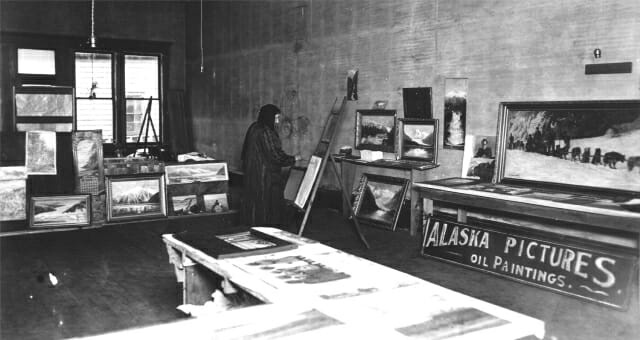 |
|
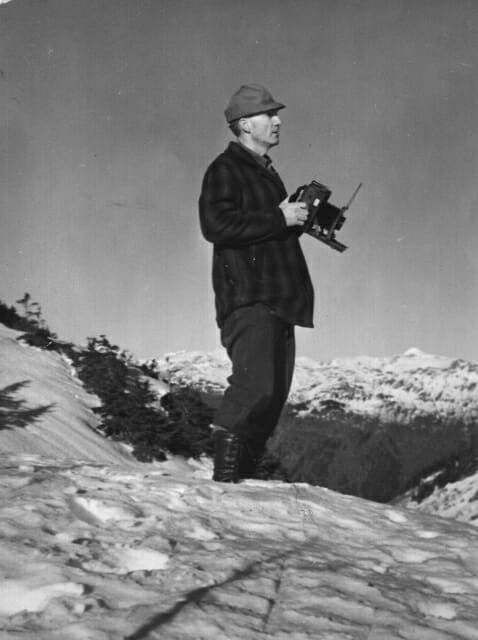 |
|
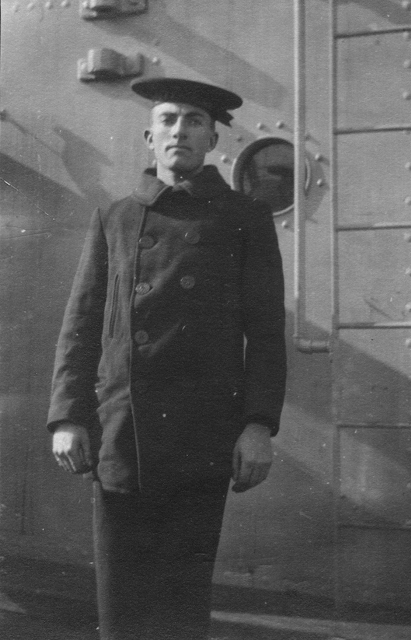 |
|
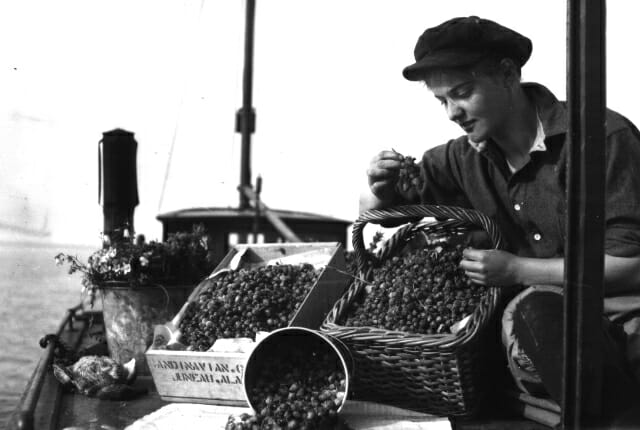 |
|
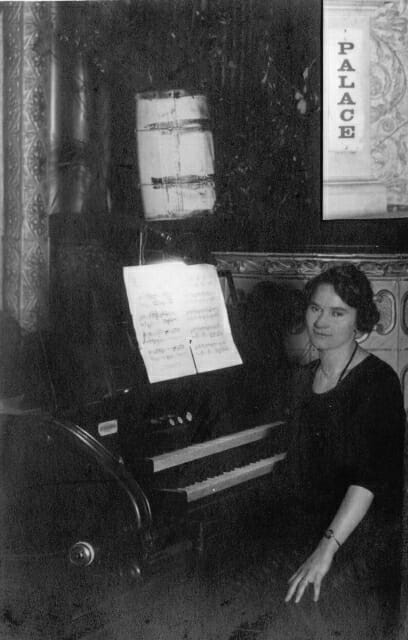 |
|
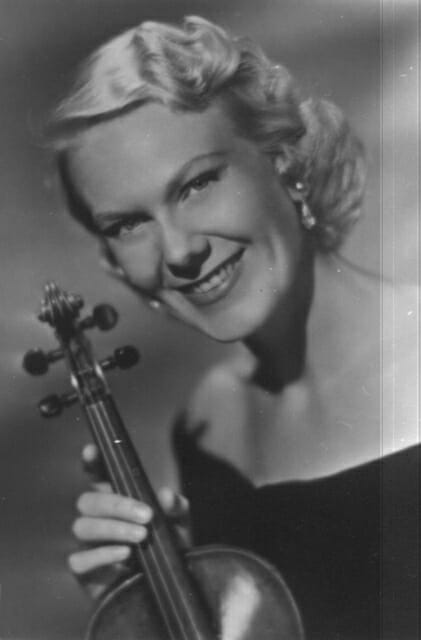 |
|
